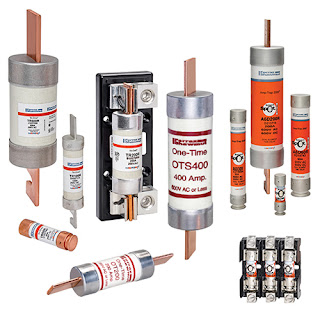Parametric Releases Modelling Software and Apps
Parametric Technology has released Creo 1.0, a software product that is designed to enable enterprise-wide participation in the product design process, along with a set of Creo apps. Creo is designed to solve the unaddressed problems remaining in the mechanical CAD market: usability, interoperability, assembly management and technology lock-in. The software provides a scalable suite of interoperable, integrated design apps - built to meet the needs of all the users that form a company's extended product development team.
By more fully engaging these users throughout the product lifecycle, companies can increase productivity and improve operational efficiencies, getting better products to market faster. Roberto Dolci, chief information officer of System Group, said: 'We believe that Creo delivers capabilities that will help increase the productivity of everyone involved in System's product development process. 'By allowing a broader set of people across the company to access product data in a way that fits their role, and by introducing 3D direct modelling to speed up new product development, Creo helps accelerate our business agility, which drives our success,' he added.
The first set of Creo apps is designed to optimise engineering, manufacturing and service processes. Role-based packages are designed to help increase productivity for everyone from service planners, technical illustrators and industrial designers to engineers who have historically driven product design processes using 3D direct or parametric modelling, while also benefiting CAD users in the extended enterprise.Apps include: Creo Sketch, for the simple, freehand drawing of ideas and design concepts in 2D; Creo Layout, for capturing early concept layouts in 2D that ultimately drive 3D design; Creo Parametric, for powerful, 3D parametric modelling capabilities currently available in Creo Elements/Pro (formerly known as Pro/Engineer); Creo Direct, for fast, flexible 3D geometry creation and editing using a direct modelling approach; Creo Simulate, which delivers the capabilities an analyst needs for structural and thermal simulation; Creo Schematics, for creating 2D routed system diagrams for piping and cabling designs; Creo Illustrate, for 3D technical illustrations, providing capabilities to communicate complex service and parts information, training and work instructions to improve product usability and performance graphically in 3D; Creo View ECAD, for viewing, interrogating and marking up electronic geometry; and Creo View MCAD, for viewing, interrogating and marking up mechanical geometry.
In addition, Creo offers a highly flexible and open solution that helps companies to obtain maximum business value from their CAD investments, according to Parametric. For many companies, Creo provides an opportunity to divest from a heterogeneous CAD environment and consolidate on a single design platform. However, the Anydata Adoption technology of Creo is said to ensure that consolidation is a choice and not a requirement. Creo respects and protects existing investment in data and working methods - enabling access to data from any CAD system. The majority of Creo 1.0 apps are available now in 10 languages. Creo Sketch and Creo Layout are planned to be available later in July and late autumn 2011 respectively.
By more fully engaging these users throughout the product lifecycle, companies can increase productivity and improve operational efficiencies, getting better products to market faster. Roberto Dolci, chief information officer of System Group, said: 'We believe that Creo delivers capabilities that will help increase the productivity of everyone involved in System's product development process. 'By allowing a broader set of people across the company to access product data in a way that fits their role, and by introducing 3D direct modelling to speed up new product development, Creo helps accelerate our business agility, which drives our success,' he added.
The first set of Creo apps is designed to optimise engineering, manufacturing and service processes. Role-based packages are designed to help increase productivity for everyone from service planners, technical illustrators and industrial designers to engineers who have historically driven product design processes using 3D direct or parametric modelling, while also benefiting CAD users in the extended enterprise.Apps include: Creo Sketch, for the simple, freehand drawing of ideas and design concepts in 2D; Creo Layout, for capturing early concept layouts in 2D that ultimately drive 3D design; Creo Parametric, for powerful, 3D parametric modelling capabilities currently available in Creo Elements/Pro (formerly known as Pro/Engineer); Creo Direct, for fast, flexible 3D geometry creation and editing using a direct modelling approach; Creo Simulate, which delivers the capabilities an analyst needs for structural and thermal simulation; Creo Schematics, for creating 2D routed system diagrams for piping and cabling designs; Creo Illustrate, for 3D technical illustrations, providing capabilities to communicate complex service and parts information, training and work instructions to improve product usability and performance graphically in 3D; Creo View ECAD, for viewing, interrogating and marking up electronic geometry; and Creo View MCAD, for viewing, interrogating and marking up mechanical geometry.
In addition, Creo offers a highly flexible and open solution that helps companies to obtain maximum business value from their CAD investments, according to Parametric. For many companies, Creo provides an opportunity to divest from a heterogeneous CAD environment and consolidate on a single design platform. However, the Anydata Adoption technology of Creo is said to ensure that consolidation is a choice and not a requirement. Creo respects and protects existing investment in data and working methods - enabling access to data from any CAD system. The majority of Creo 1.0 apps are available now in 10 languages. Creo Sketch and Creo Layout are planned to be available later in July and late autumn 2011 respectively.


Comments